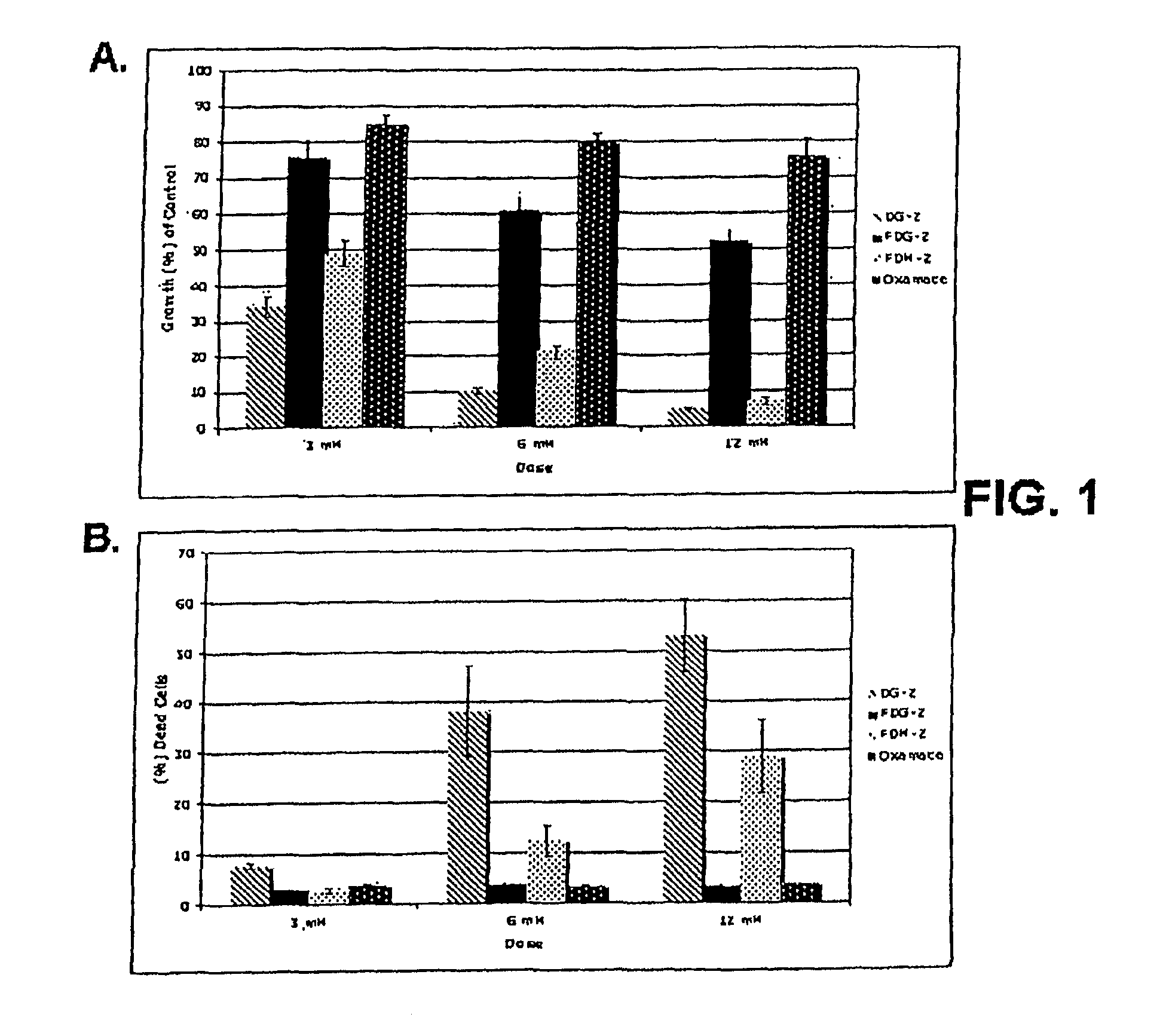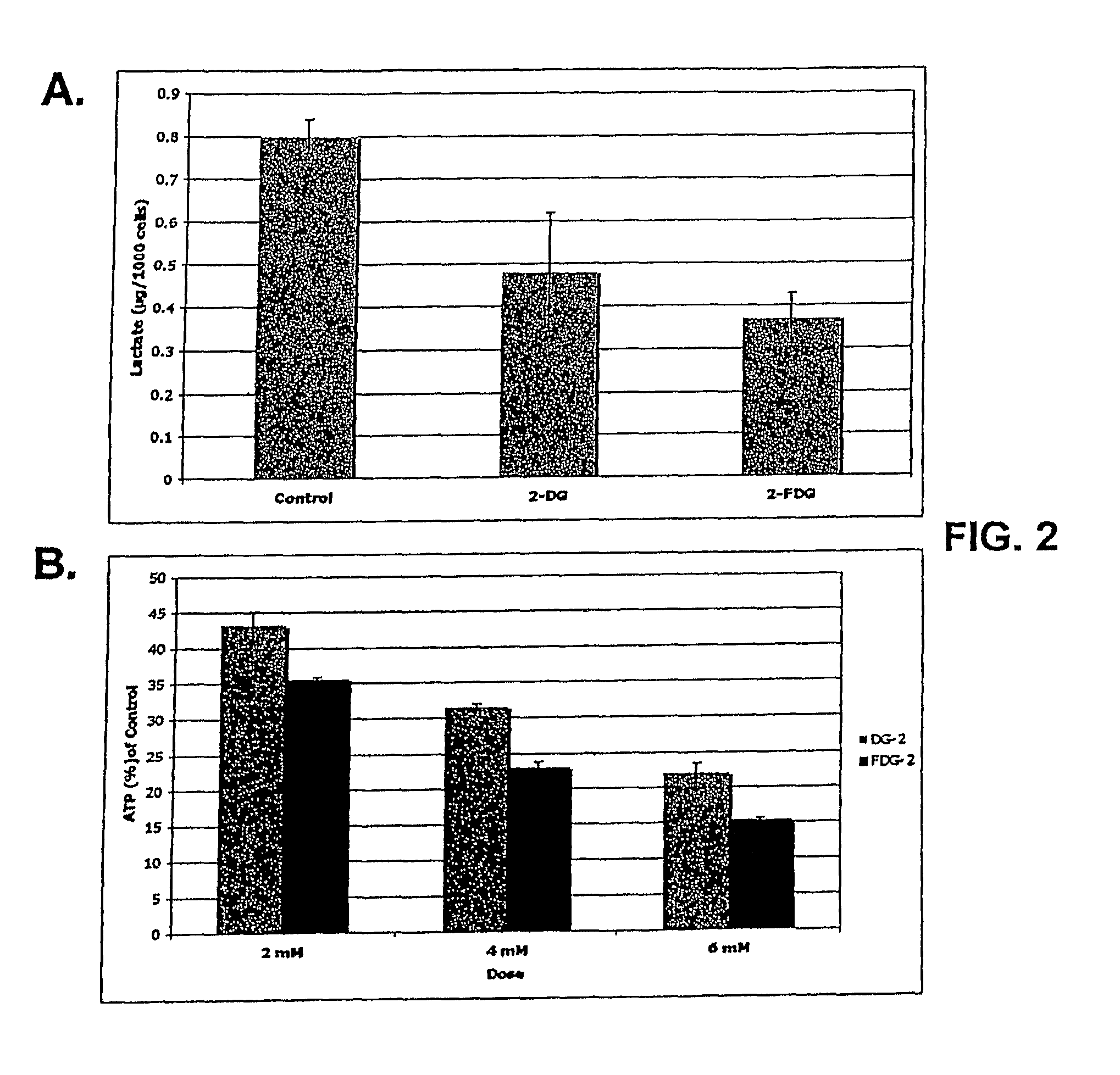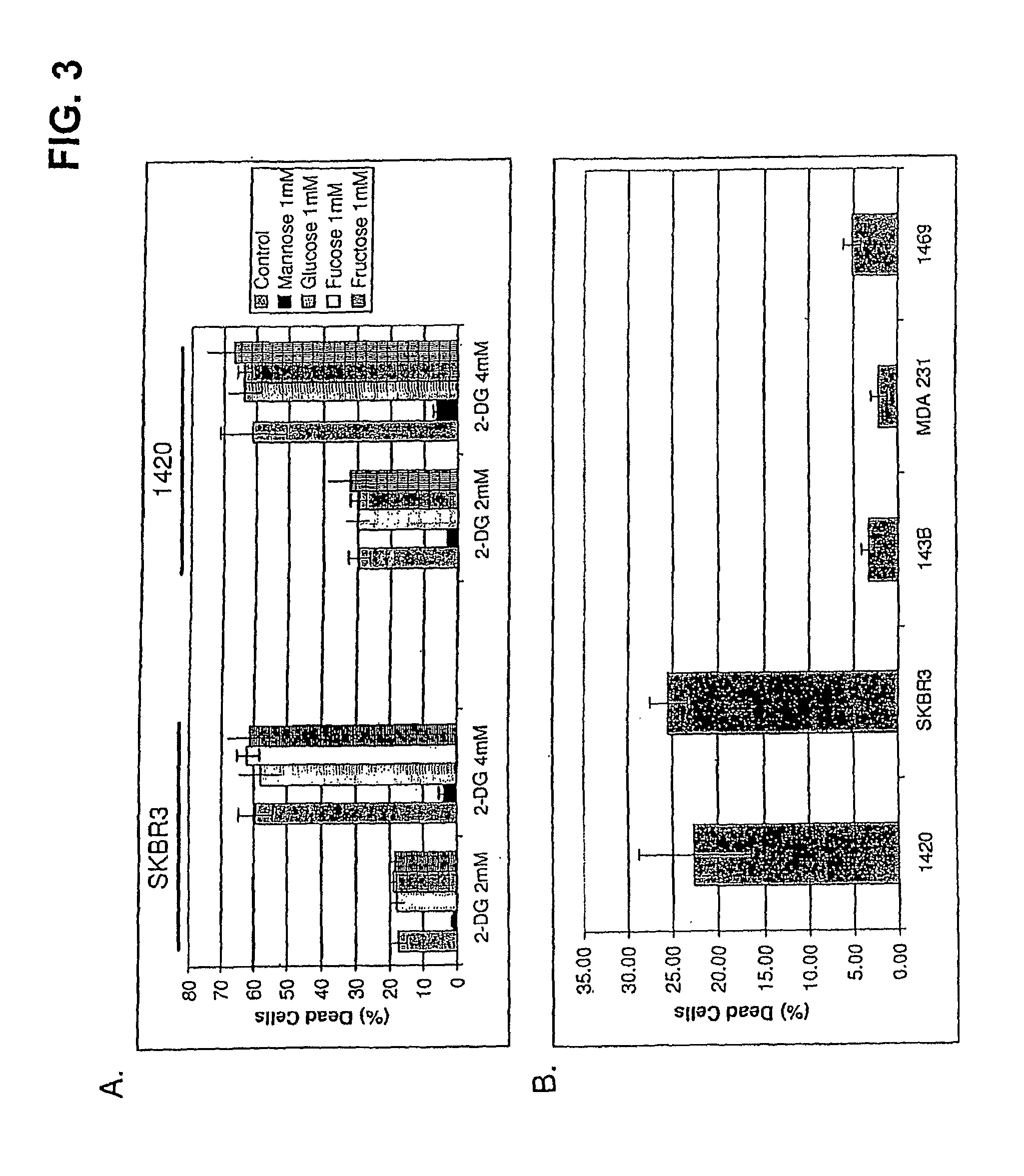Mannose derivatives for killing tumor cells
a technology of mannose derivatives and tumor cells, applied in the field of medicine, can solve the problems of inability to produce energy, cell death, and difficulty in combination therapies for both patients and physicians, and achieve the effects of reducing the synthesis of viral glycoproteins, blocking glycolysis, and profound biological effects
- Summary
- Abstract
- Description
- Claims
- Application Information
AI Technical Summary
Benefits of technology
Problems solved by technology
Method used
Image
Examples
example 1
Materials and Methods
[0078]Isolation of resistant mutants. 2-DG sensitive SKBR3 and NSCLC cells were exposed to increasing doses of 2-DG and resistant colonies were isolated and cloned at the appropriate doses of 2-DG. The cloned 2-DG resistant cells were then analyzed and compared to the wild-type sensitive counterpart for expression of specific genes that may be responsible for this unique sensitivity.
[0079]Drugs and antibodies. Rho 123, oligomycin, staurosporin, and 2-DG, 2-FG, 2-FM, tunicamycin, deoxymannojirinomycin were obtained from Sigma Chemical Co. The following primary Abs can be used: monoclonals to HIF-1a and LDH-a. (BD Biosciences); erbB2 (Calbiochem, USA); Grps 78 & 94, (StressGen, USA); caspases 4 and 5 (StressGen, USA); and actin (Sigma Chemical Co.); polyclonal abs to GLUT-1 (USA Biological) and GADD153 / CHOP (Santa Cruz, USA). The secondary antibodies were horseradish peroxidase conjugated rabbit anti-mouse and goat anti-rabbit (Promega, Co.).
[0080]Cytotoxicity ass...
example 2
Normoxic Sensitivity of Certain Tumor Cells to Mannose Derivatives
[0096]Cells growing under hypoxia are solely dependent on glucose metabolism via glycolysis for energy production. Consequently, when this pathway is blocked, with 2-deoxy-D-glucose (2-DG), hypoxic cells die. In contrast, when glycolysis is blocked under normoxia most cells survive, because fats and proteins can substitute as energy sources to fuel mitochondrial oxidative phosphorylation. The invention is based in part on the discovery that, under normal oxygen tension, a select number of tumor cell lines are killed at a relatively low dose of 2-DG (4 mM). It has been shown previously that 2-DG interferes with the process of N-linked glycosylation in viral coat glycoprotein synthesis, which can be reversed by addition of exogenous mannose. Because the 2-DG toxicity under normoxia described herein can be completely reversed by low dose mannose (2 mM), glycosylation and not glycolysis is believed to be the mechanism res...
example 3
Theranostic Method
[0137]A patient cancer tumor sample is obtained by biopsy. The isolated cells are treated with 2-DG, 2-CM, or 2-FM under normoxic conditions and hypoxic conditions to determine if they are sensitive to the mannose analog under normoxic conditions and insensitive to the mannose analog under hypoxic conditions. The detection of sensitivity to the at least one mannose analog under normoxic conditions and lack of sensitivity to the at least one mannose analog under hypoxic conditions results in the determination that the patient cancer tumor sample comprises cells sensitive to killing due to an interference with glycosylation under normoxia. Sensitive cells under normoxic conditions are treated with mannose to confirm that the cytotoxic effects of the 2-DG, 2-CM, or 2-FM treatment are due to an interference with glycosylation.
[0138]Alternatively, the molecular signature of cells from a patient cancer tumor sample is compared with the molecular signatures of closely rel...
PUM
| Property | Measurement | Unit |
|---|---|---|
| concentration | aaaaa | aaaaa |
| pH | aaaaa | aaaaa |
| Size fractionation | aaaaa | aaaaa |
Abstract
Description
Claims
Application Information
 Login to View More
Login to View More - R&D
- Intellectual Property
- Life Sciences
- Materials
- Tech Scout
- Unparalleled Data Quality
- Higher Quality Content
- 60% Fewer Hallucinations
Browse by: Latest US Patents, China's latest patents, Technical Efficacy Thesaurus, Application Domain, Technology Topic, Popular Technical Reports.
© 2025 PatSnap. All rights reserved.Legal|Privacy policy|Modern Slavery Act Transparency Statement|Sitemap|About US| Contact US: help@patsnap.com



